Original URL: https://www.theregister.com/2014/05/16/intel_future_tech_showcase_nucs_boards_and_solar_power/
Intel shows off tech bubbles, low-power yacht racing and... a DIRECT solar charger
Chipzilla showcase mixes ideas with reality
Posted in Personal Tech, 16th May 2014 15:21 GMT
Pics In London this week, Intel’s Innovation Future Showcase not only presented a glimpse of how the chip giant reckons we’ll be interacting with the world in years to come, but, more soberly, allowed visitors to toy with some forthcoming products and current offerings.
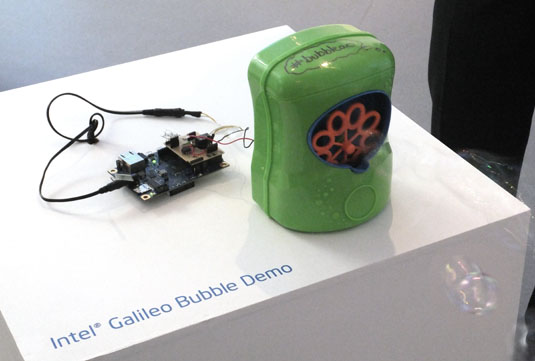
Fit to burst: Galileo Bubbleao, just add modem and Tweet
And toy with them you must. After all, where would we be without an Intel Galileo developer board complete with modem hooked up to a bubble-making machine that fires out those spheres of nothingness when it receives the Twitter hashtag: #bubbleao? (It's a Bohemian Rhapsody pun... don't make us spell it out...)
Put that hashtag in your tweet and you’ll probably fire up the demo when Johnny Foreigner gets a look-in, as Intel is on the road in Europe this month.
Arguably, a visible reaction is going to be the most obvious way to demonstrate tech responding to commands. With the Internet of Things in mind, another working demo featured a Galileo board changing colours on a light strip controlled by an app on a mobile device.
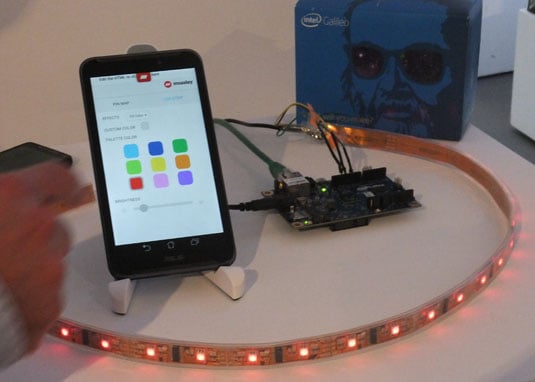
Light fantastic – remote control from mobile network
To complicate matters slightly, a tablet was hooked up to a mobile phone acting as a hotspot that that then communicated the app instructions to the Galileo board which was connected via Ethernet to a router.
Needless to say, commands for home automation from a remote location are among the possible scenarios Intel suggests for this sort of idea. No doubt Raspberry Pi owners have been there and done that with these tricks and, admittedly, some of what was on display has been seen before at CES. However, products such as the diminutive Edison system-on-a-chip – that’s not much bigger than an SD card and due this summer – are getting close to release now.
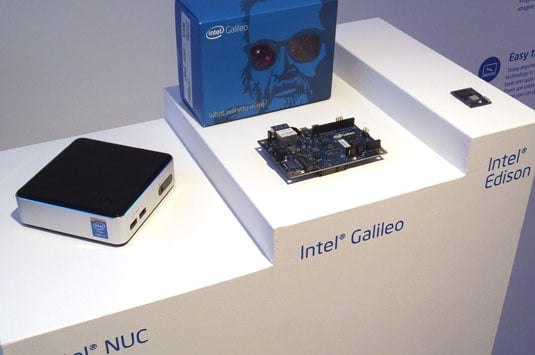
Intel's trio: NUC, Galileo and Edison
Hellooo... I'm on a yacht. Yes you heard me...
On the stand, the changes in scale in computing was highlighted, with the most complete off-the-shelf new product being the Intel NUC – Next Unit of Computing. Apparently, the NUC is the new best friend of round-the-world sailor Francois Gabart. His old navigation system was on display alongside his new set-up with a NUC.
It’s the low power consumption of the NUC that attracts Gabart. His old system would use between 50W of power, going as high as 80W for some tasks. By contrast, the NUC requires 20W and stays at 20W.
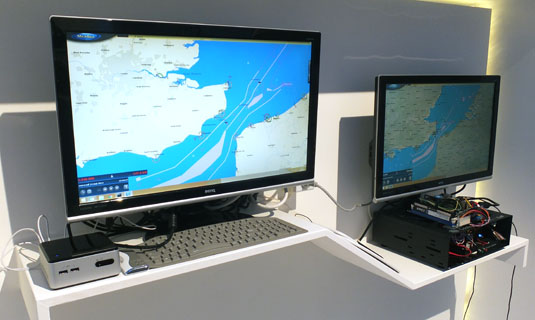
Francois Gabart's test NUC set-up compared with his old PC – both running MaxSea navigation software
Gabart reckons in the 78 days its took him to race the world, that each extra Watt of continuous power use over that period pretty much accumulates to one litre of diesel. By drastically reducing his power consumption requirements with the NUC, he aims to shed a lot of weight from his boat and get around even faster.
Gabart was also give an Intel Education 2-in-1, a reference design convertible tablet/PC that’s also waterproof. When he opens a peer-to-peer wireless hotspot from the NUC, it enables him to access navigation information on deck, rather than going below to check things out.
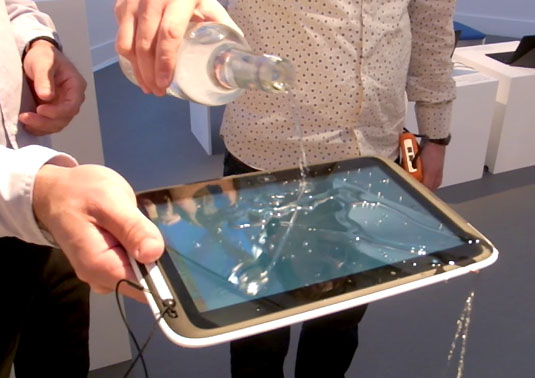
You should always take tablets with water
While Intel waits for manufacturers to adopt its Education kit ideas, it has used the 2-in-1 reference design as a platform to demonstrate its solar charging technology. Under the banner Alternative Power Architecture (APA), the company is looking at ways of charging devices directly without needing a battery as a proxy of sorts.
In trials in Peru using a 100W solar panel, Intel’s Smart Solar Controller proved capable of directly charging four Classmate PCs.
All well and good, but it has taken things a step further by embedding the Smart Solar Controller technology into a platform. Here, that Education reference design Atom tablet/keyboard combo makes another appearance, as it can plug directly into a solar panel.
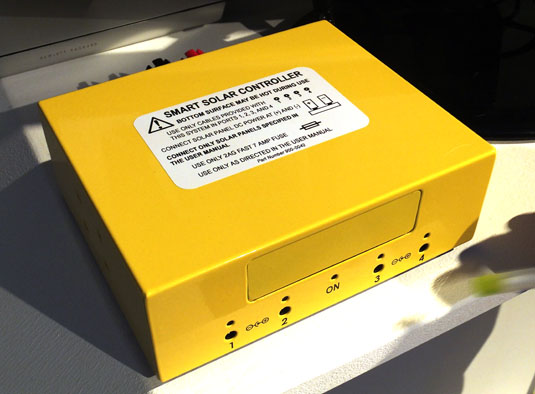
Direct charging of up to four Classmate PCs with the Smart Solar Controller
Built into the platform is intelligence that works out what can be drawn from the solar panel, so it can turn it on and use it when it can. Part of the problem with solar panels is that an oscillation occurs from the power that becomes available and how that drops when used under load.
The APA technology prevents oscillation and doesn’t activate power circuit and let it past the gate until there’s sufficient energy behind it. A prototype charging array was also on show that can deliver different voltages according to the type of device inserted. It’s auto-detecting so only the required power is discharged.
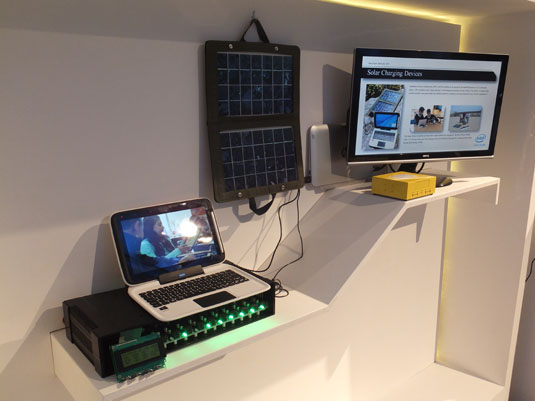
Solar examples of Intel's Alternative Power Architecture (APA) tech
So while it’s not always on, Intel reckons that its direct solar charging is the first of its kind. Whether this will become a common feature of PCs targeted at more off-the-grid countries will all come down to cost, but the idea seems sound enough, although it will rather put a damper on night school classes. ®